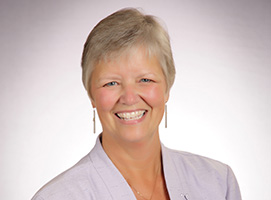student success
How can your campus meet the needs of adult and online learners?
 I attended the Sloan-C Conference in Orlando earlier in October—the event to attend on the topic of online learning. I participated in some excellent sessions to learn more about how campuses are serving nontraditional learners.
I attended the Sloan-C Conference in Orlando earlier in October—the event to attend on the topic of online learning. I participated in some excellent sessions to learn more about how campuses are serving nontraditional learners.
During a session presented by Dr. Kristen Betts from Armstrong Atlantic State University on “Engaging and Retaining Today’s Diverse Student Population,” she shared the following statistics about the 17.6 million undergrads now enrolled in higher education:
- 43% attend two-year institutions.
- 37% are enrolled part-time.
- 32% are working full-time.
- 25% are over the age of 30.
- Only 15% attend four-year colleges and live on campus.
Dr. Bett’s also shared a visual indicating that enrollment in online programs jumped from 229,363 to 2,139,714 between 2001 and 2009—an 832 percent increase. (This is data from Eduventures, published in US News & World Report, September 2010.) She also referenced that classes offered exclusively on physical campuses are expected to plummet from 14.4 million in 2010 to just 4.1 million by 2015, according to Ambient Insight.
These and other national shifts in demographics for higher education will likely require shifts in assessment strategies for your campus. In particular, assessing different populations on campus will need to be the norm if campuses want a truly accurate view of student satisfaction and priorities among all students.
It is important to keep in mind that student assessment on your campus may not be a one-size-fits-all activity. Different types of students have different needs. To get a true picture of the satisfaction and priorities of all your student populations, you should administer satisfaction surveys to each of those populations. Adult and online learners have greater potential to feel disconnected from your institution because of their efforts to balance their home and work life. In addition, the very nature of online environments provides limited opportunities for student engagement beyond the classroom experience. These same students may be harsher critics of the institutional value and more easily able to slip from your radar screen for student success efforts, so it is extra important to make sure that their top priorities are being met. Asking them how satisfied they are with their experience at your institution, and responding with improvements in the areas they value, can be powerful ways to reflect how important these students are to you.
This raises the question of what you are doing on your campus to identify the priorities of your nontraditional students. In my September 5 blog, I highlighted the top five challenge areas for adult students and online learners. In another related blog, I identified the top enrollment factors influencing nontraditional students’ decisions to enroll. The combination of these types of data can help you focus your retention and recruitment efforts so you can not only attract adult and online learners to your institution, but help them persist and complete their educational goals.
We will be examining the national satisfaction data for adult and online learners more closely, along with motivational data from transfer students, during a Webinar on November 15: Retaining and Serving Nontraditional Students. If you are working with nontraditional populations currently or your campus is looking to expand its efforts in this demographic, I invite you to join us. You can also send me an e-mail with any questions you have about assessing nontraditional students, or share your own strategies in the comments.
